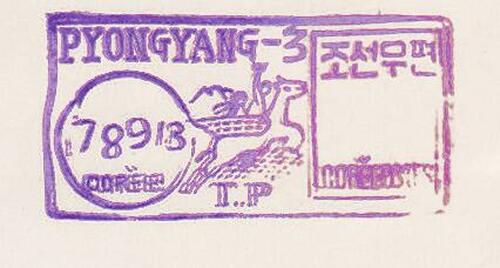Strategic Implications Of North Korea's Expanding Naval Ambitions
Authored by Jihoon Yu via RealClearDefense,
North Korea's recent unveiling of the Choe Hyon-class multipurpose destroyer signals a major transformation in its naval strategy, carrying profound and complex implications for regional and global security. The construction of this 5,000-ton warship marks a deliberate departure from Pyongyang's traditional coastal defense doctrine, historically centered around small, fast attack craft optimized for littoral engagements. Instead, the new platform reflects an ambition to project power across broader maritime domains, signaling a strategic evolution towards an expeditionary, blue-water navy.
The enhanced operational radius provided by the Choe Hyon-class destroyer enables North Korea to extend its naval presence well beyond the Korean Peninsula, threatening key maritime routes and complicating the operational calculus of South Korea, Japan, and the United States. If this platform eventually secures the ability to launch nuclear-armed ballistic and cruise missiles, it would represent a transformative leap in Pyongyang's deterrence posture. Equipped with vertical launch system (VLS), the destroyer could then field a diverse arsenal capable of targeting both land and sea-based assets across considerable distances, significantly elevating the strategic risks in the region.
If North Korea's ongoing efforts to enhance its nuclear capabilities eventually lead to the deployment of nuclear warheads on this platform, the strategic landscape would be further destabilized. Sea-based nuclear platforms would introduce a new layer of strategic complexity. Unlike land-based missile systems, which are more readily tracked and targeted, mobile maritime platforms are inherently more elusive, complicating preemptive strike options and missile defense architectures. This mobility would grant North Korea a potent second-strike capability, eroding confidence in the stability of existing deterrence frameworks. As a result, adversaries may face greater difficulty in distinguishing between conventional and nuclear threats during a crisis, increasing the risk of inadvertent escalation.
The strategic implications would become even more acute if North Korea succeeds in complementing this surface capability with the acquisition of nuclear-powered submarines (SSNs) capable of launching submarine-launched ballistic missiles (SLBMs). Should Pyongyang succeed in fielding a credible SSBN (ballistic missile submarine) fleet, it would possess a survivable nuclear deterrent, fundamentally altering the strategic balance in Northeast Asia. Reports suggest that North Korea's SSN program has received clandestine assistance, possibly from Russia, accelerating its timeline and technological sophistication.
The unveiling of the Choe Hyon-class destroyer must also be seen within the broader context of North Korea's doctrinal shift toward proactive military operations. Moving away from a historically reactive defense posture, Pyongyang appears increasingly willing to embrace preemptive, offensive maritime strategies aimed at undermining U.S. and allied freedom of navigation in the region. This trajectory raises the possibility of North Korea seeking to impose a regional anti-access/area-denial (A2/AD) strategy, leveraging both land- and sea-based assets to constrain allied operational flexibility in a crisis.
Such developments risk fueling a maritime arms race in Northeast Asia, prompting South Korea, Japan, and the United States to accelerate investments in naval modernization, undersea warfare capabilities, and integrated missile defenses. Yet simply matching North Korea platform-for-platform would be insufficient. Addressing the broader strategic challenge requires a comprehensive approach that enhances maritime domain awareness, strengthens alliance interoperability, and builds layered missile defenses capable of countering both conventional and nuclear threats. Enhanced investment in anti-submarine warfare (ASW) capabilities, the deployment of more resilient undersea surveillance systems, the expansion of joint maritime exercises, and the establishment of rapid-reaction maritime forces will also be critical to preempt and deter potential provocations. In particular, South Korea should seriously consider pursuing its own nuclear-powered submarine program to enhance its underwater operational endurance and strategic deterrence, thereby reinforcing its ability to respond flexibly to the evolving undersea threat environment.
Ultimately, the deployment of advanced platforms like the Choe Hyon-class destroyer reflects not merely a technical upgrade, but a profound recalibration of North Korea's strategic ambitions. Pyongyang is no longer content to deter adversaries solely through the threat of land-based nuclear retaliation; it seeks to establish itself as a maritime power capable of projecting coercive influence across the Indo-Pacific. If left unaddressed, North Korea's evolving naval capabilities could significantly erode regional stability and embolden Pyongyang's broader strategic calculus. A coordinated, multidimensional response from the United States, South Korea, Japan, and other regional stakeholders—encompassing deterrence, defense, diplomacy, and sustained pressure on North Korea's illicit networks—is urgently required to mitigate these emerging threats and preserve a credible deterrence posture.
Jihoon Yu is a research fellow and the director of external cooperation at the Korea Institute for Defense Analyses. Jihoon was the member of Task Force for South Korea’s light aircraft carrier project and Jangbogo-III submarine project. He is the main author of the ROK Navy’s Navy Vision 2045. His area of expertise includes the ROK-US alliance, the ROK-Europe security cooperation, inter-Korean relations, national security, maritime security, and maritime strategy. He earned his MA in National Security Affairs from the US Naval Postgraduate School and PhD in Political Science from Syracuse University.



